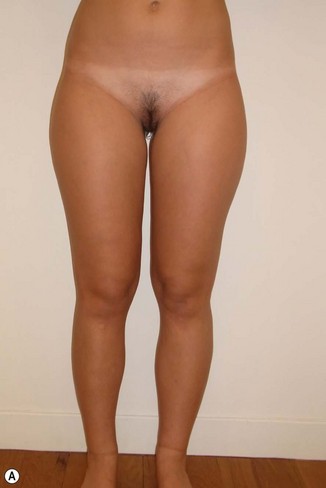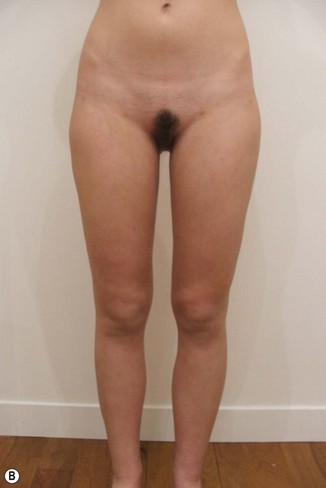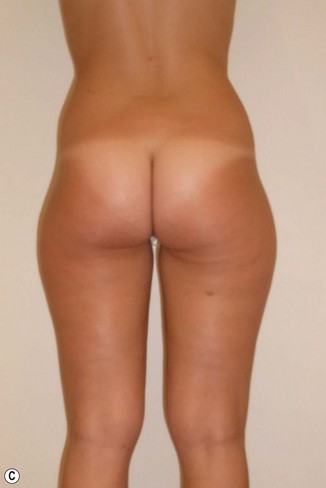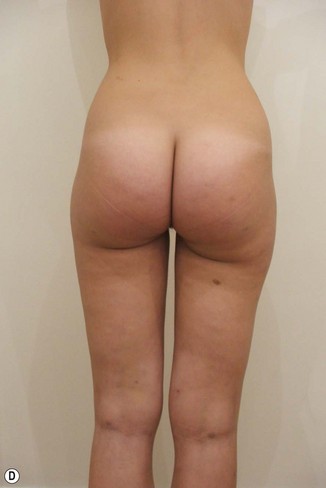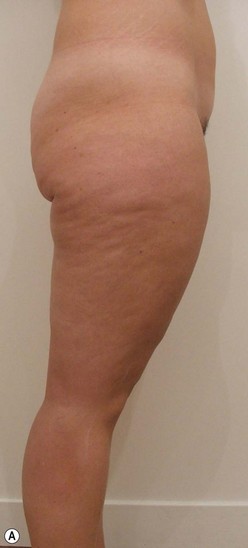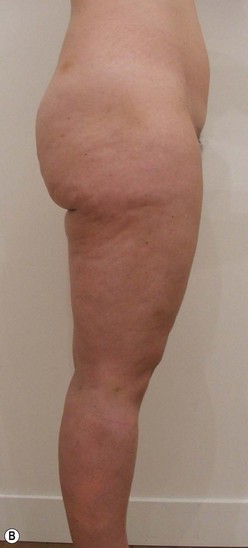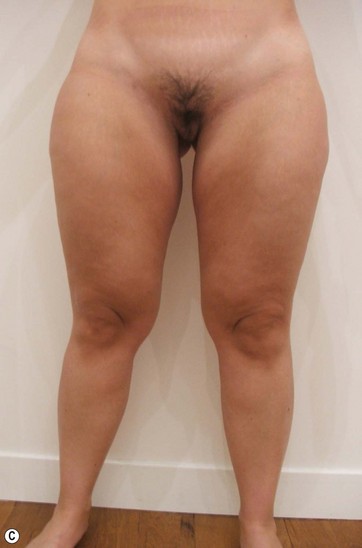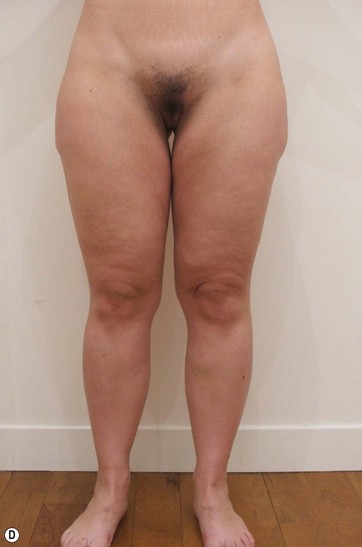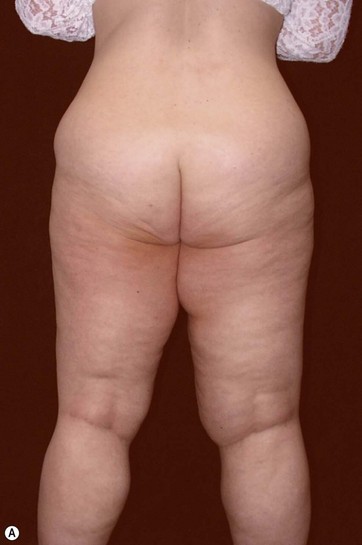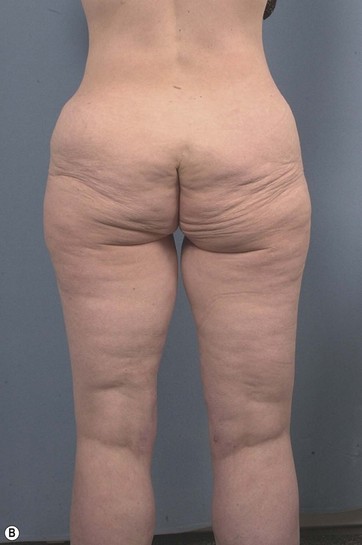Chapter 42 Liposuction of the lower extremities and leg reshaping with fat
Introduction
Lower extremity fat reduction and reshaping of the legs and buttocks is a common request from French women patients. There are specific techniques required to achieve excellent results on the lower extremities (Figs 42.1 and 42.2).
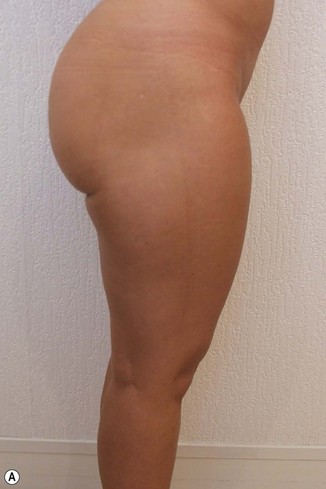
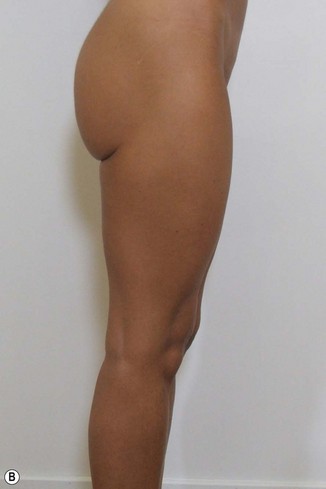
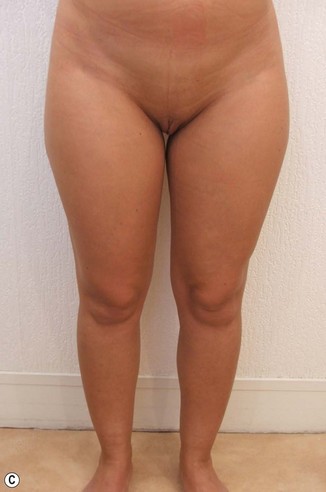
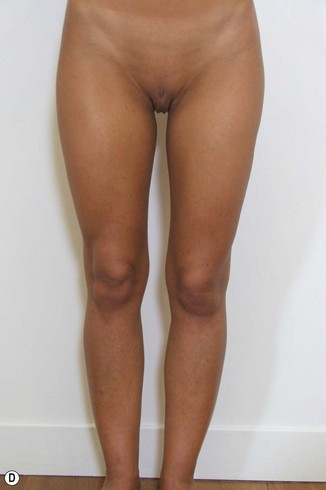
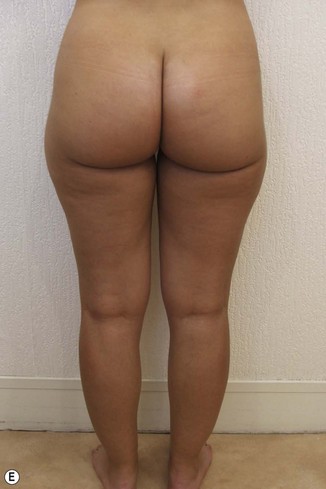
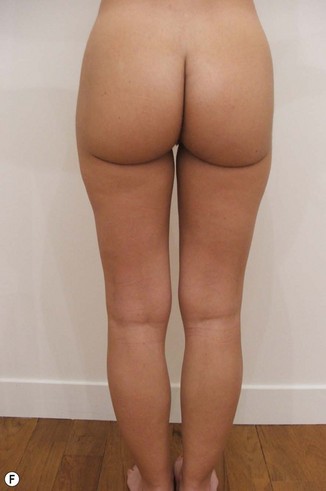
FIG. 42.2 Circumferential liposuction of upper legs and buttocks.
Patient 1 year postoperative. (A, B) Side view; (C, D) front view; (E, F) back view.
Since the original description of the lipoaspiration technique by Illouz in 1977,1–3 many authors have applied the principles of vacuum liposuction with a smooth blunt cannula and introduced some modifications to achieve better shape and contours, better skin retraction, and more fat removal.
When it comes to leg reshaping, the preoperative consultation is fundamental, permitting a good selection of patients based on the local and general conditions found at the interview and clinical examination. It is important to keep in mind the condition of the legs, especially the importance of skin quality, color, texture, elasticity and the quality of the vessels (essentially the veins), which should be respected as much as possible to avoid complications and lead to a good result (Figs 42.3 and 42.4).
Preoperative Preparation
Many women are candidates for leg reshaping, and for buttocks and breast fat grafting at the same time;4,5 therefore it is important to properly inform the patient in order to benefit from both techniques. At that final point of the consultation the photos are helpful and in certain cases will be signed and approved by the patient. The patient is also asked to select photos of her ideal legs and buttocks in magazines and bring them. This helps me to understand the patient’s expectations, which sometimes can be unrealistic and a reason to decline the surgery.
The patient showers with Betadine the night before and on the morning of the day of surgery.
< div class='tao-gold-member'>
Stay updated, free articles. Join our Telegram channel

Full access? Get Clinical Tree


